AT2020 Cardioid Condenser Studio XLR Microphone

AudioTrove® Rating for the Audio-Technica AT2020 Microphone
Our Score
4.7/5 Stars From 7,487 Buyers
 14 Reasons To Buy
14 Reasons To Buy
- Bright yet rich. This microphone provides precise and crystal clear audio without hyping the vocals up. Users commended the thick and distinct sound AT2020 produces.
- Smart buy. No user regretted buying the AT 2020. All reviews recommended that anyone who is looking for a microphone should purchase this. For it’s affordable price, users said it exceeded all their expectations.
- Easy to set up. All users find this microphone incredibly simple to set up. One reviewer suggested that if you're using it on a computer, make sure you have an audio interface with phantom control.
- Impressive all-around mic. All users loved how flexible this microphone is. Reviewers claimed that they had used the AT 2020 in recording their vocals, instruments, and even for online classes. One user said that even his professor was amazed by the detail and quality of sound AT 2020 produces.
- Minimal background noise. Surprisingly, AT 2020 does not pick up much background noise. All reviewers said that this microphone works magnificently with a bit of fine-tuning and recording-ready environment.
- Podcast and voice over talents’ best friend. Most reviewers were amazed at how the AT 2020 worked in their podcasts and voice-over projects. Users praised how phenomenal and professional sounding they became using this microphone.
- Durable, quality built. Tested by many users, the all-metal body of the AT 2020 makes it durable, and reviewers applauded the well-engineered build and feel of the microphone.
- Perfect with Guitars and Pianos. Most users loved using the AT 2020 with their guitars. The AT 2020 is neutral; it can warm up the sound somewhat, but overall accuracy is very high; it captures the color of the piano; bass, treble, and mids are all sweet. One user complimented how this microphone sounded amazingly for his online streaming.
- Ideal for Beginners. Users who are starting to build their home studios claimed that they were delighted with the AT 2020. A user reviewed that the frequency response of this microphone is more than adequate for professional recording. The big polar pattern lets him capture acoustic and electric guitars and vocals.
- Must have for streamers and gamers. Users find the sound quality produced by this microphone to be remarkable. Most users said that the AT 2020 gives versatility and comfort while gaming compared to headset microphones.
- Clean and sleek. Reviewers appreciated how this microphone looks. Users loved the minimalist design of the AT 2020.
- Great for Zoom and Skype calls. If you want to sound clear during meetings, AT 2020 is a must-grab for you. All reviewers were amazed at how they sounded during their Zoom and Skype meetings while using this microphone.
- Less white noise. Compared with other XLR microphones, the AT 2020 does not cause a lot of white noise.
- Fantastic for beginners and pro singers. One user highly recommended the AT 2020 for studio recording singers, both novice and pros. With a little tweak, here and there, professional-quality sound for music production.
 6 Reasons NOT To Buy
6 Reasons NOT To Buy
- Users mentioned that they had to purchase additional equipment, such as cables and mount, as it only has the mic.
- A phantom power supply is required and must be purchased separately.
- A buyer finds the package incomplete as it does not have a padded metal box with it.
- This microphone does not have an on and off switch which might be bothersome to some users.
- One user recommended the use of a windscreen for this microphone.
- A user does not recommend this microphone for live performances and rock vocals.
Audio-Technica AT2020 Product Research Summary
The AT2020 is undeniably one of the best entry-level condenser microphones out in the market that is manufactured by Audio-Technica, a Japanese company with a big reputation in manufacturing products that are world-class in terms of quality and design. This condenser microphone sets the standard in affordability and great sound quality for all microphones in its class.
Remarkably, the AT2020 works well as a vocal microphone. Its low mass diaphragm has the ability to pick up sounds that are either high-pitched, low, or hush sounds. This will also mean that any off-axis sound is rejected. In terms of frequency, this microphone has a range of 20Hz to 20kHz and has a fairly flat sound. As a result, signals from a vast variety of sources are received, minus the harshness in the produced sound. On top of that, it has a low self noise, making this microphone excellent for digital recording.
In addition, the AT2020's maximum sound pressure rating (SPL) is 144dB. This consistency allows for accurate reproduction of loud instruments and powerful vocals. This microphone can accommodate horns, percussion, and vocals with ease. Plus, the cardioid pattern eliminates unnecessary sound pickup while enhancing the clarity of the desired sound. These characteristics make it ideal for both home and studio use.
Its compact, streamlined design and robust build can last for a long time. With the price point of AT2020, it surpasses all expectations and makes it an in-demand microphone in every home, podcasts or music recording studios.
Product Specifications
- Brand: Audio-Technica AT2020 Microphone
- Element: Fixed-charge back plate, permanently polarized condenser
- Polar Pattern: Cardioid
- Frequency Response: 20-20,000 Hz
- Open Circuit Sensitivity: -37 dB (14.1 mV) re 1V at 1 Pa
- Maximum Input Sound Level: 144 dB SPL, 1 kHz at 1% T.H.D.
- Noise: 20 dB SPL
- Dynamic Range: 124 dB, 1 kHz at Max SPL
- Signal-to-Noise Ratio: 74 dB, 1 kHz at 1 Pa
- Phantom Power Requirements: 48V DC, 2 mA typical
- Output Connector: Integral 3-pin XLRM-type
- Accessories Included: AT2020 (black model): Stand mount for 5/8"-27 threaded stands; 5/8"-27 to 3/8"-16 threaded adapter; soft protective pouch; AT2020V (limited-edition silver model): AT8458a shock mount; 5/8"-27 to 3/8"-16 threaded adapter; soft protective pouch
- Audio-Technica Case Style: R7
- Weight: 12.1 oz (345 g)
- Dimensions: 6.38" (162.0 mm) long, 2.05" (52.0 mm) maximum body diameter
Frequently Asked Questions (FAQ)
Q: Is it possible to use this as a USB microphone or to plug it into a Macbook Pro?
A: Yes, if you have a conversion box. Since it needs phantom control, this model uses an XLR gui (three prong, cylindrical shape). This model can be used with a USB converter box that costs about $100. I use an AKAI expert ($250+) with up to four microphones and four outputs, as well as a USB cable. All of this being said, you should only buy a "AT2020 USB" and skip the entire thing.Yes, if you have a conversion box. Since it needs phantom control, this model uses an XLR gui (three prong, cylindrical shape). This model can be used with a USB converter box that costs about $100. I use an AKAI expert ($250+) with up to four microphones and four outputs, as well as a USB cable. All of this being said, you should only buy a "AT2020 USB" and skip the entire thing.
Q: Is it good for recording rap vocals?
A: Yes, it's an excellent microphone for a variety of applications.
Q: Is it possible to use this microphone to record my keyboard?
A: You'll get improved sound quality if your keyboard has a direct output to your gui. This could work if you want to capture the sound coming from your keyboard's built-in speakers with a microphone, but it's not the best option.
Q: Is it possible to record directly from a digital camera with it?
A: No, Phantom power is needed for this microphone.
Q: What audio interface/mixer are you using with an xlr or non-usb microphone to make it work with a computer?
A: We've tried a couple, but our current favorite is the Steinberg UR-22. Easy to use, compatible, and efficient!
Q: Should this mic fit with my computer's xlr to 3.5mm interface?
A: It is dependent on the situation. Yes, if your machine has phantom control. I'm not sure if that's a thing, but if it is, you'll have to connect it to a device with an audio interface that can supply phantom power to the mic.It is dependent on the situation. Yes, if your machine has phantom control. I'm not sure if that's a thing, but if it is, you'll have to connect it to a device with an audio interface that can supply phantom power to the mic.
Q: How far away from the subject's mouth can you position this microphone and still get decent sound? I'm hoping to hang it like a boom mic.
A: There are numerous aspects that influence how far you can go. But, in general, you'll want to get close to this microphone. Also, this microphone has a Cardioid Polar Pattern, which means it picks up sound from the long side rather than the rounded tip.
Q: Is this microphone compatible with both the grace concept model 101 preamp and the audient id22 audio interface?
A: Yes, it will work with both!
Q: Is it possible to link this to an Android phone?
A: You will technically do so by purchasing an xlr to 3.5mm jack. However, an external power source is needed for this microphone. If you don't do this, the recorder will fit, but it won't be able to record anything it hears. The sound quality of what you record will be bad as you listen to it. You may use a soundboard or a phantom power source, all of which require power from an outlet.
Q: Is this mic up to the task of handling loud singers? Is it prone to distortion?
A: It's a great-sounding mic that can accommodate a wide range of vocal inflections, but I still have to be careful about how near or far I put myself from the mic during a podcast. A singer with a powerful voice, I think, would be much more dynamic. It's possible that you'll need to pay a little extra money to get one made specifically for vocal performance.
Famous artists, producers, musicians, & records that used this microphone:
- Billie Ellish

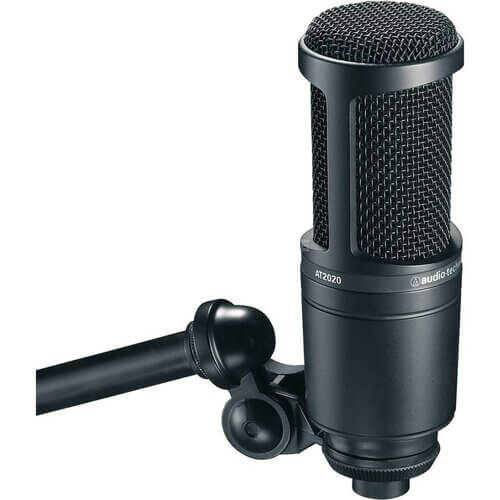




 14 Reasons To Buy
14 Reasons To Buy 6 Reasons NOT To Buy
6 Reasons NOT To Buy







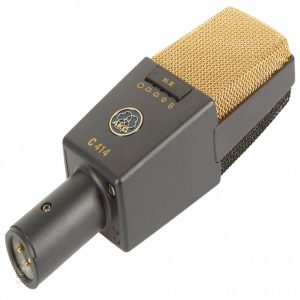
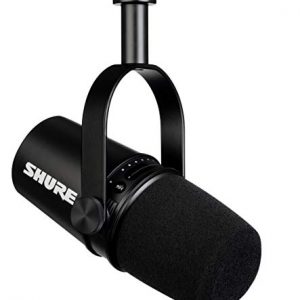
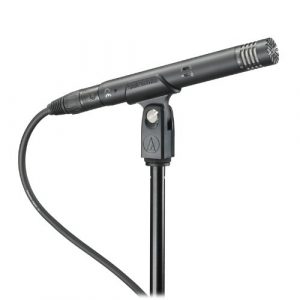
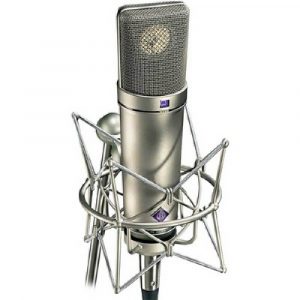
Reviews
There are no reviews yet.